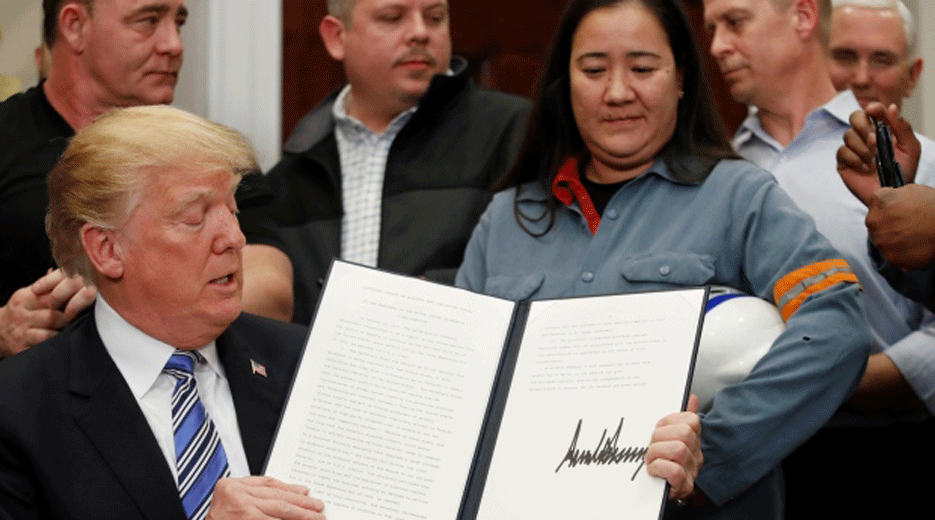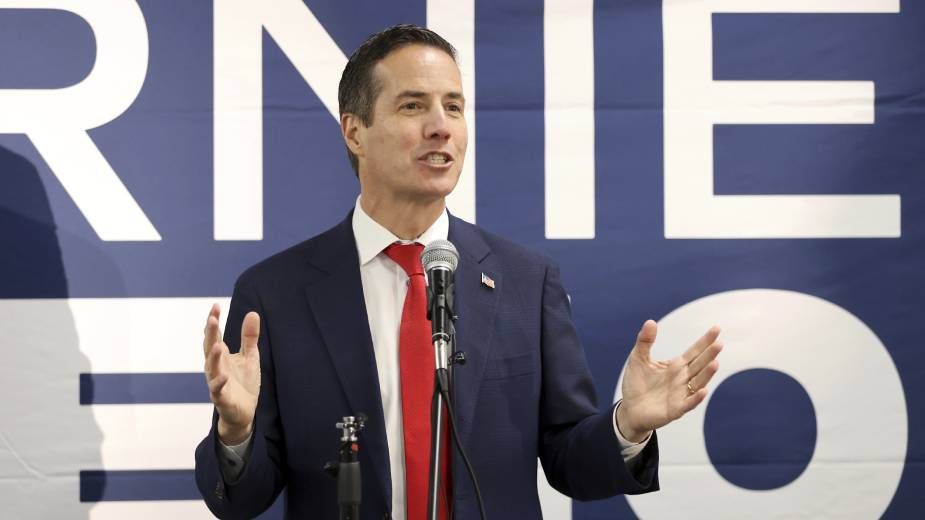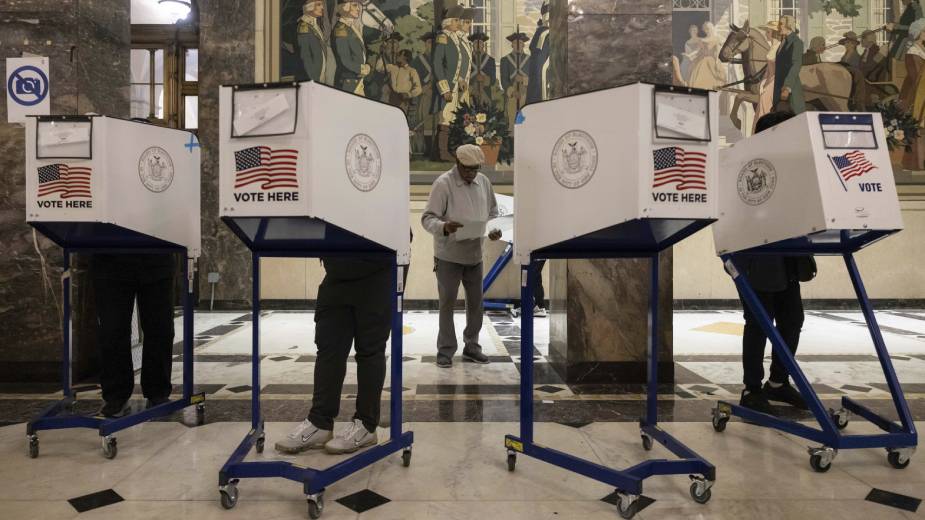Trade War Could Rattle Region’s Economy
YOUNGSTOWN, Ohio – As China and the Trump Administration engage in what amounts to global trade brinkmanship, it’s left a trail of uncertainty for those who work in sectors of the economy considered most vulnerable in the event of an all-out trade war.
“It’s still too early to tell what impact this will have,” said Barbara Burley, president of Fireline Inc. in Youngstown. The company manufactures ceramic vessels used to hold molten metal and are sold to manufacturers mostly in the aerospace industry.
In March, the Trump Administration announced it would levy a tariff of 25% on imported steel to the United States and a 10% duty on aluminum. It has since carved out exemptions for countries such as Canada, Mexico and South Korea — all three of which are currently engaged in talks to renegotiate trade agreements with the United States.
The administration also awarded temporary exemptions to Brazil, the European Union, Argentina and Australia. However, no exemptions have as yet been extended to China or Japan, and both countries have vowed to retaliate by placing punitive trade barriers on American products entering those countries.
China, for example, threatened on April 4 to impose penalties of 25% on 106 American-made products including older models of the Boeing 737 aircraft, a move that some in the industry say could impact manufacturers and weaken international air travel, which in turn could impact Fireline’s business, Burley said.
“The bulk of our business is aerospace,” she said. “Airline travel is a big thing. If the worldwide economy were to take a downturn and a trade war happened, it would have an impact.”
On Monday, Chinese President Xi Jinping appeared to walk back from the tough rhetoric of the previous week, promising to “significantly lower” tariffs on U.S. vehicle imports. Analysts have pointed out that this could be the first step in diffusing the trade impasse between the two countries.
“It sounded like good news, so maybe they’ll cooperate,” Burley said. “We’ll have to see what the outcome is.”
China’s response to the Trump Administration’s proposed tariffs targets a wide swath of the U.S. economy and employment base, encompassing a mixed bag of agricultural and manufactured items that the U.S. ships overseas.
A recent study published by Brookings surveyed 40 industries that manufacture products that could be susceptible to Chinese tariffs should they be enacted. In all, these 40 segments represent more than 2.1 million jobs. According to Brookings, 229,754 jobs are at risk in aircraft manufacturing, while another 119,104 are exposed in the domestic auto industry, should China activate its threatened tariff policies.
Other industries potentially affected by Chinese trade sanctions include manufacturers in pharmaceuticals, plastics products, adhesives, natural gas, wine and beer, the study showed. And, the survey identified broad exposure to the livelihoods of farmers who raise soybeans, fruits and nuts, vegetables, corn, cotton and tobacco.
Brookings found that the Chinese tariffs are carefully targeted to impact those counties won by President Donald Trump in the 2016 election. Of the 2,742 counties identified in the analysis that employ workers in industries vulnerable to tariffs, 2,247 – or 82% – voted for Trump in 2016.
Trumbull County – which voted red for Trump in 2016 – is a good example, since it is heavily reliant in automobile manufacturing and soybean production. Brookings ranked Trumbull County among the top 200 – 178 to be exact – identifying 4,834 jobs related to industries that could be affected by Chinese tariffs, representing 7.2% of the labor force. While other counties ranked lower had more jobs at risk, Trumbull County’s jobs-to-labor force ratio was higher.
Columbiana County was ranked at 490 with 1,010 jobs in these industries, or 3.5% of its labor force, while Mahoning County ranked 1,338 with 1,007 jobs exposed, or a 1.1% share of the employment force, according to Brookings.
“Primary metals are used heavily here – advanced machinery, electric machinery – all of these industries are going to be affected if they go through with it,” said Mousa Kassis, director of the Export Assistance Network at Youngstown State University.
The organization helps companies in a 16-county region in eastern Ohio and western Pennsylvania with strategies to export their products. As such, any trade barriers enacted in retaliation to U.S. tariffs would be detrimental to both the global economy and the regional economy, Kassis said.
“The region does $14 billion worth of export trade per year,” Kassis said, or 14% of the region’s income. He estimates that between 5,000 and 6,000 jobs are retained for every $1 billion earned in export dollars, so any disruption in this business could be significant.
Most of this export business is conducted with North American Free Trade, or NAFTA, partners Mexico and Canada – countries likely to be exempt from tariffs, Kassis said. Yet even the loss of a small percentage in the region’s export business could cost thousands of jobs.
“If exports in the region drop by $500 million, that’s 2,000 to 3,000 jobs at risk,” he said. “That is worrisome.”
Kassis said a trade war of any kind is not healthy for global or local business. “Trade fairness is fine, a trade war is not.” Ultimately, a trade war between the United States and China would also impact purchasing power from other countries that do business with both, he said.
“It would mean a setback for the U.S. economy and hinder the recovery that began years ago,” he said.
Still, such a conflict may be thwarted before it reaches a critical stage, Kassis said, evidenced by Xi Jinping’s latest gestures.
“If they come to an agreement, then both sides can claim victory to their political constituents,” Kassis said. “China might show some concessions and ask for other concessions in return.”
Meanwhile, those who could be potentially impacted by the tariffs have to wait for the outcome as these two trading superpowers continue to take each other’s measure.
“It’s all guesswork right now,” said John Wallbrown, director of new business development at Deerfield Farm Services in Deerfield, Ohio. The company operates grain elevators in the region where it stores and dries grain and soybeans.
The bulk of the soybeans, Wallbrown said, are loaded onto containers at Deerfield’s sites and shipped directly via rail to U.S. ports and then to destinations in Southeast Asia. As far as he knows, the containers are not bound for China. However, Deerfield also sends its soybeans to Heritage Cooperative’s facility in East Liverpool, where they are loaded onto barges and then shipped internationally – some of which are bound for China.
“The export market is huge for us,” he said. “About 80% of what we have is exported.”
Should China make good on tariffs on American-grown soybeans, Wallbrown said it would place downward pressures on the market. Moreover, since soybeans are a commodity, China would likely turn to another supply source, most likely Brazil.
Yet Brazil doesn’t have the capacity to serve the entire Chinese market, and would therefore need to source additional soybeans to accommodate demand. That means Brazil would need to purchase from U.S. farmers, thereby reducing the risk to domestic soybean growers.
“There will be an impact,” Wallbrown said, should China enact retaliatory tariffs. “But I don’t know if it will be large or small. It might not be a huge problem.”
Pictured: President Trump holds the tariff proclamation he signed in March.
Copyright 2024 The Business Journal, Youngstown, Ohio.



